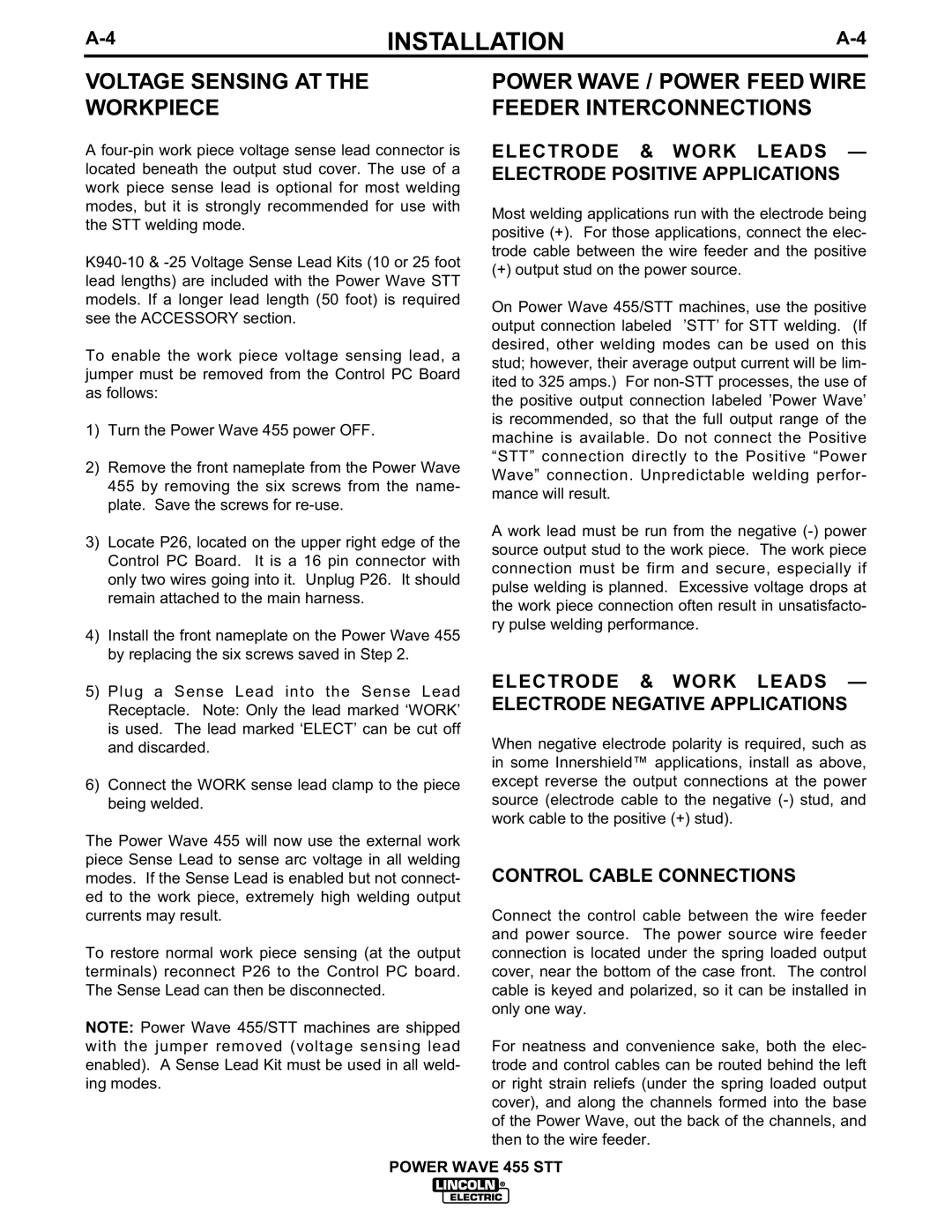INSTALLATION | ||
|
|
|
VOLTAGE SENSING AT THE WORKPIECE
A
To enable the work piece voltage sensing lead, a jumper must be removed from the Control PC Board as follows:
1)Turn the Power Wave 455 power OFF.
2)Remove the front nameplate from the Power Wave 455 by removing the six screws from the name- plate. Save the screws for
3)Locate P26, located on the upper right edge of the Control PC Board. It is a 16 pin connector with only two wires going into it. Unplug P26. It should remain attached to the main harness.
4)Install the front nameplate on the Power Wave 455 by replacing the six screws saved in Step 2.
5)Plug a Sense Lead into the Sense Lead Receptacle. Note: Only the lead marked ‘WORK’ is used. The lead marked ‘ELECT’ can be cut off and discarded.
6)Connect the WORK sense lead clamp to the piece being welded.
The Power Wave 455 will now use the external work piece Sense Lead to sense arc voltage in all welding modes. If the Sense Lead is enabled but not connect- ed to the work piece, extremely high welding output currents may result.
To restore normal work piece sensing (at the output terminals) reconnect P26 to the Control PC board. The Sense Lead can then be disconnected.
NOTE: Power Wave 455/STT machines are shipped with the jumper removed (voltage sensing lead enabled). A Sense Lead Kit must be used in all weld- ing modes.
POWER WAVE / POWER FEED WIRE FEEDER INTERCONNECTIONS
ELECTRODE & WORK LEADS — ELECTRODE POSITIVE APPLICATIONS
Most welding applications run with the electrode being positive (+). For those applications, connect the elec- trode cable between the wire feeder and the positive
(+) output stud on the power source.
On Power Wave 455/STT machines, use the positive output connection labeled ’STT’ for STT welding. (If desired, other welding modes can be used on this stud; however, their average output current will be lim- ited to 325 amps.) For
A work lead must be run from the negative
ELECTRODE & WORK LEADS — ELECTRODE NEGATIVE APPLICATIONS
When negative electrode polarity is required, such as in some Innershield™ applications, install as above, except reverse the output connections at the power source (electrode cable to the negative
CONTROL CABLE CONNECTIONS
Connect the control cable between the wire feeder and power source. The power source wire feeder connection is located under the spring loaded output cover, near the bottom of the case front. The control cable is keyed and polarized, so it can be installed in only one way.
For neatness and convenience sake, both the elec- trode and control cables can be routed behind the left or right strain reliefs (under the spring loaded output cover), and along the channels formed into the base of the Power Wave, out the back of the channels, and then to the wire feeder.
POWER WAVE 455 STT
